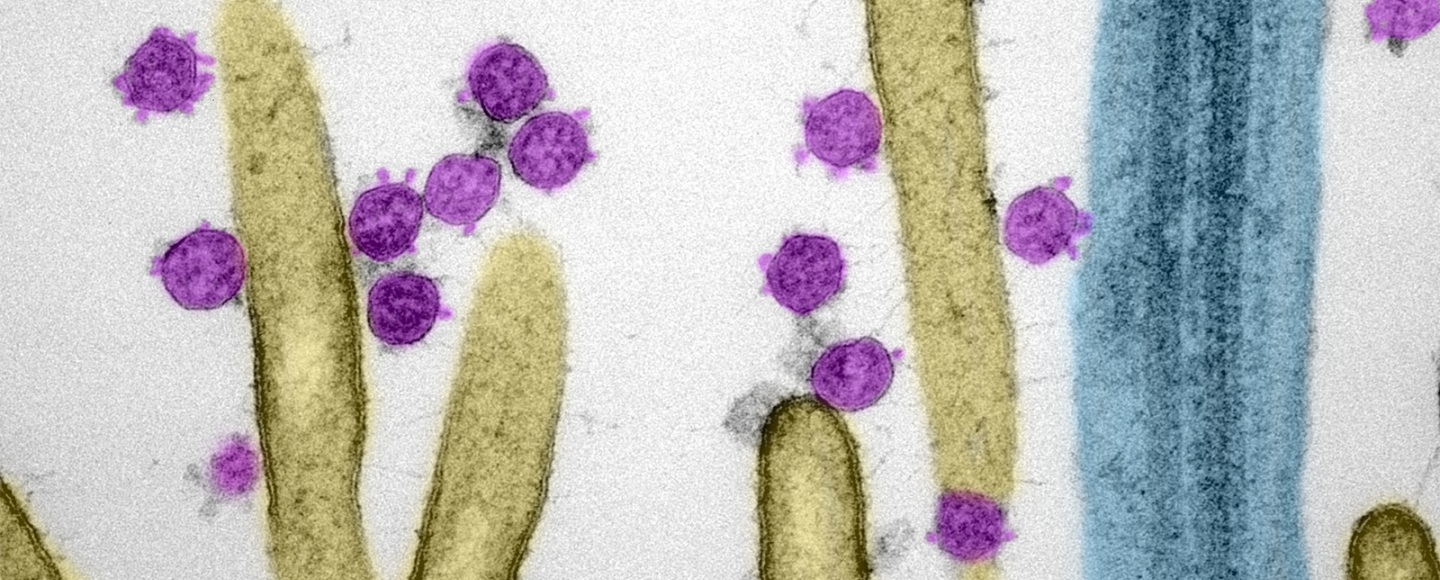Table of ContentsClose

Closer: Scene of the infection
As COVID-19 crept into most corners of the world, causing over 2 million deaths, researchers such as Paul McCray (81MD, 84R, 88F) have been using bench science research to aid in the development and testing of treatments. The image above from the McCray lab—showing infection of human airway epithelial cells with SARS-CoV-2, the virus that causes COVID-19—is important for investigating the biology of virus infection. Cultured epithelial cells from the trachea and bronchi also provide information about host-pathogen interactions and are important models in testing antiviral treatments. The newly produced virions (purple), with their familiar spike-like structure, are shown exiting the human cells. The virus particles are observed in close association with microvilli (yellow) and cilia (blue) on the mucosal surface of the cell.
McCray, a pediatric pulmonologist who holds the Roy J. Carver Chair in Pulmonary Research, and UI colleague Stanley Perlman, MD, PhD, professor of microbiology and immunology and the Mark Stinski Chair in Virology, realized that a mouse model they had created a decade earlier to study SARS might be an invaluable tool for understanding COVID-19 and for testing potential treatments. Their study, published in November 2020 in Nature, showed that the repurposed model can develop symptoms of both severe COVID-19 (lung damage, blood clots, abnormal blood vessels, and death) and also of milder disease, including loss of the sense of smell. The model has been distributed globally from Jackson Laboratories for testing treatments.
This image was obtained with the assistance of Christine Wohlford-Lenane and Tom Moninger.
